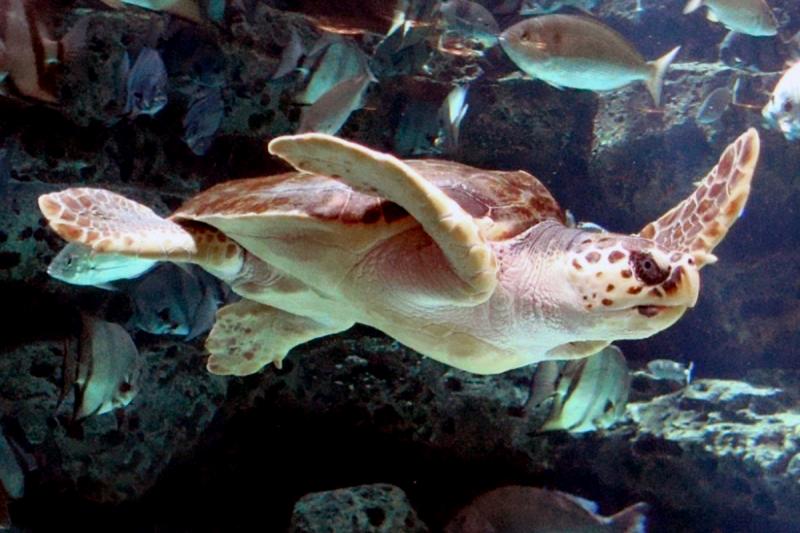The oceans off the coast of Delaware are teeming with countless amazing creatures. Some, like the Atlantic Bottlenose Dolphin, are periodically visible when they breach the surface, While others coast by undetected. Throughout the summer, this column will highlight many of of these native neighbors so that readers may also appreciate the many species (some critically endangered) that peacefully swim just off our coast).
This week is devoted to the four species of sea turtles that call their Delaware waters their home.
Loggerhead Turtle
Scientific name: Caretta caretta
Notable by its large head and strong jaws (used for cracking open horseshoe crabs, mussels, clams, and other invertebrates), Loggerhead turtles have two claws on its front flippers and rear flippers with two to three claws. They can grow up to about 3 feet and weigh up to 375 pounds.
Loggerheads are highly sensitive to water temperatures, and can become cold-stunned by when the waters get between 55 and 59 degrees, so they avoid the cooler waters during their migration. The females will travel thousands of miles to lay their eggs on the same sands which they were born. Having survived about 110 million years, these turtles are now endangered in the U.S. due to the destruction of their nesting habitat (largely from coastal development), predation of their nests, human disturbance and pollution.
Leatherback Turtle
Scientific name: Dermochelys coriacea
The only sea turtle without a hard shell, the leatherback has a layer of tough, rubbery skin that is strengthened by thousands of bone plates. They can grow up to 6 feet and weigh up to 1,100 pounds. When leatherbacks lay their clutch of eggs (usually around 100, 80 of which are fertilized), they undergo the longest migration between breeding and feeding, averaging about 3,700 miles each way. Even though they are classified as reptiles, they are able to maintain warm body temperatures in colder water. They are the best divers of any sea turtles, plunging to depths of 4,200 feet and able to stay underwater for up to 85 minutes. The leatherback is considered endangered in the U.S., due primarily to incidental catches during commercial fishing, pollution and human disturbance.
Green Sea Turtle
Scientific name: Chelonia mydas
Perhaps one of the most identifiable of sea turtles due to a pair of scales in the front of its eyes, the green sea turtle is marked by a small head and a single claw on all its flippers. They grow up to about 4 feet (weighing in at about 400 pounds) and are notable for taking rests below the surface under rocks and ledges to help protect themselves from predators. Young green sea turtles tend to be carnivorous, but evolve to be herbivores as they age. And while the green sea turtle can be found in temperate and tropical waters all over the globe, they are endangered due to commercial harvesting of their eggs, meat and leather and incidental catches from commercial shrimping.
Kemp's' Ridley Turtle
Scientific name: Lepidochelys kempii
One of the smallest of the sea turtles found in the area (growing up to 3 feet and about 100 pounds), they are also the most rare, and are listed as the world's most endangered sea turtle. Mostly juvenile Kemp's Ridley can be found n Delaware and other east coast states, while adults usually stay in the Gulf of Mexico in shallow areas with sandy bottoms. There are estimated to be about 7,000 to 9,000 nesting females, but numbers suffer due to human collection of eggs and meat and incidental catching in commercial shrimping.























































